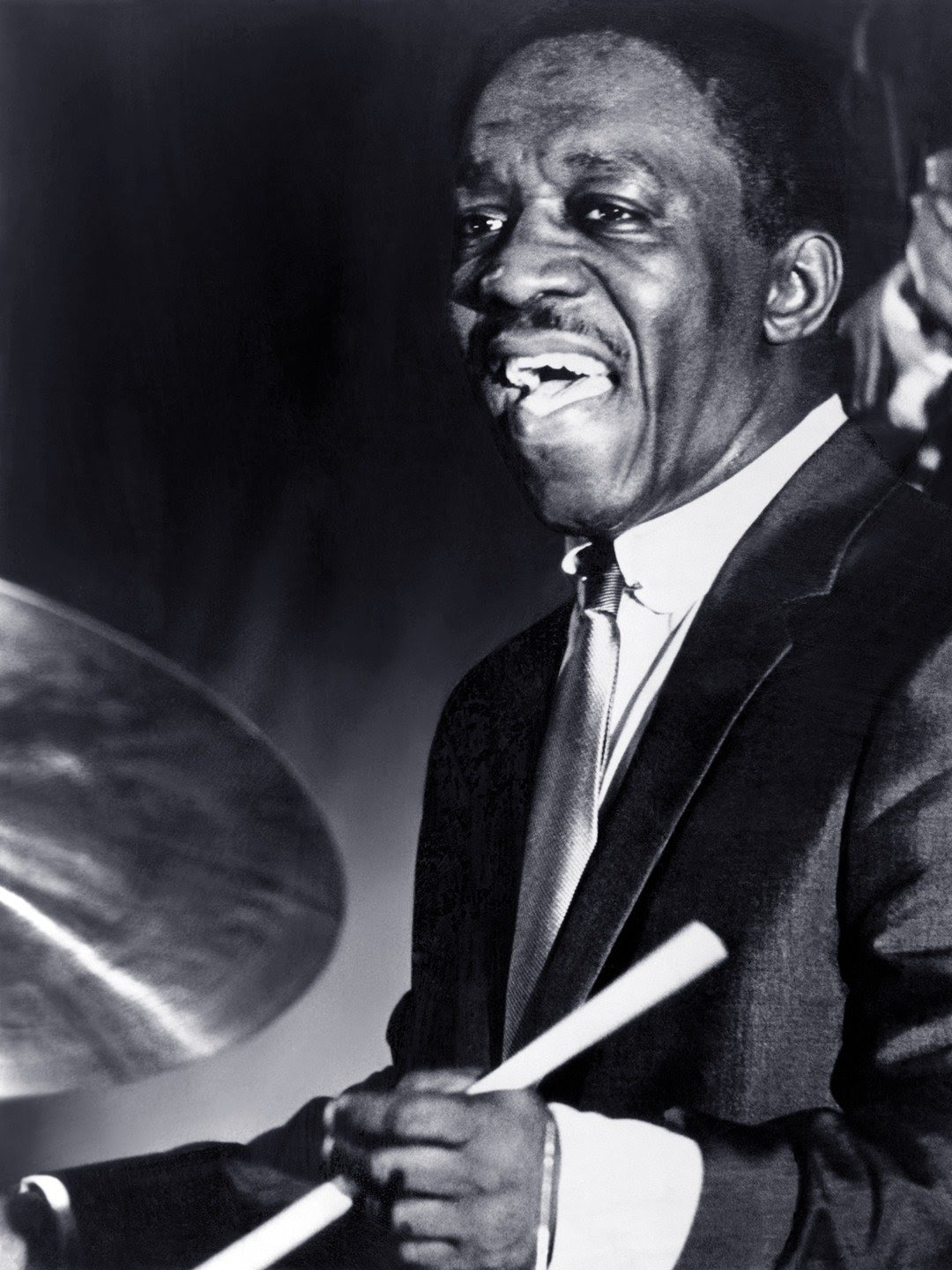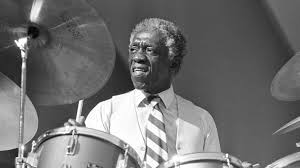Art Blakey – A Complete Biography
Introduction
Art Blakey (1919–1990) was an American jazz drummer and bandleader—one of the defining architects of hard bop—whose group, the Jazz Messengers, doubled as a finishing school for generations of improvisers. While not a blues musician per se, Blakey’s music was deeply rooted in the blues and gospel traditions that powered hard bop, making his bands a primary conduit through which those influences entered modern jazz.

Childhood
Born on October 11, 1919, in Pittsburgh, Pennsylvania, Blakey grew up in the city’s Hill District. He began studying piano as a child but switched to drums during his teenage years. Like many young men in Pittsburgh at the time, he worked in steel mills to help support himself while honing his musical talents in local clubs.
Youth
By his mid-teens, Blakey was leading his own dance band and gaining recognition for his rhythmic energy. His first major professional role was with pianist Mary Lou Williams in New York, followed by work with Fletcher Henderson. In 1944, he joined Billy Eckstine’s big band, which included future jazz icons Charlie Parker, Dizzy Gillespie, and Sarah Vaughan. After the band dissolved, Blakey traveled to West Africa, where he explored Islamic culture and adopted the name Abdullah Ibn Buhaina. This experience broadened his rhythmic approach, adding polyrhythmic complexity to his style.
Adulthood
In the 1950s, Blakey co-founded the Jazz Messengers with pianist Horace Silver. By 1956, he became the sole leader of the band, turning it into a powerhouse ensemble that remained active for over three decades. The Jazz Messengers’ recordings on the Blue Note label helped define the hard bop movement, characterized by a driving beat, soulful melodies, and bluesy improvisation. Blakey’s leadership nurtured generations of musicians, launching the careers of Lee Morgan, Wayne Shorter, Freddie Hubbard, Benny Golson, Cedar Walton, and Wynton Marsalis, among many others. His contributions were recognized with inductions into the DownBeat Jazz Hall of Fame and his designation as an NEA Jazz Master.
Major Compositions (and Signature Recordings)
Although primarily a drummer and bandleader, Blakey was closely associated with numerous compositions that became jazz standards through his recordings. Among these are Bobby Timmons’ “Moanin’,” Benny Golson’s “Blues March” and “Along Came Betty,” and Wayne Shorter’s “Free for All.” His explosive versions of “A Night in Tunisia” and “The Drum Thunder Suite” showcased his commanding style. These and other pieces from the Jazz Messengers’ repertoire remain central to the jazz canon, emphasizing Blakey’s role in blending blues and gospel traditions with modern jazz sensibilities.
Death
Blakey continued performing into his seventies, remaining an active force in jazz until his final days. He died of lung cancer on October 16, 1990, in New York City. His passing marked the end of an era, but his influence as both a drummer and a mentor ensured that his spirit lived on through countless musicians.
Conclusion
Art Blakey’s thunderous drumming, powerful sense of swing, and visionary leadership shaped the sound of modern jazz. More than a performer, he was a mentor who guided young musicians and helped define a musical movement. Through the Jazz Messengers, he created a living legacy, blending technical mastery with the raw emotion of the blues, leaving behind one of the richest bodies of work in jazz history.

Comments are closed